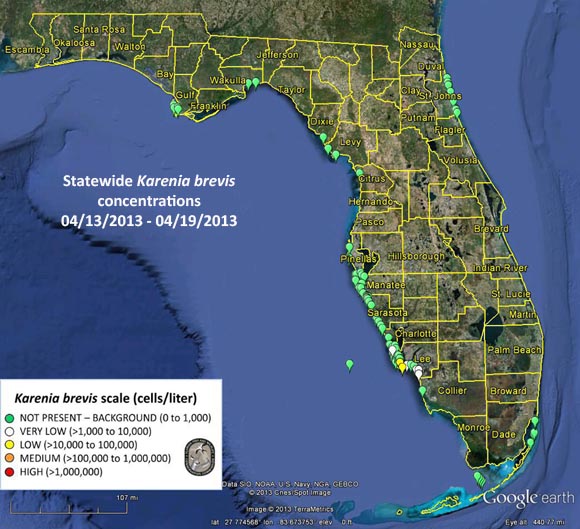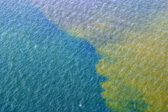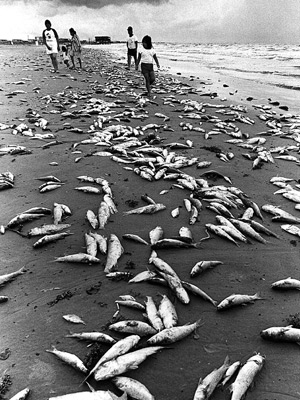Facts
HABs annually in marine waters alone have impacted the United States by causing $82 dollars in damage and loss. View the map below to see the loss from this HAB.

NOAA - Center for Sponsored Costal Research (NCCOS)
1. In Washington it was not Karenia brevis that caused a loss in revenue, but since 1991 HABs are causing a closure of a fishery that leads to a $10-12 million dollar loss in revenue. The Dungeness crab, oyster, and razor clam fisheries in Washington are valued at $71 million dollars per year for the local economy.
2 In 2005, an Alexandrium fundyense bloom (also called red tide) resulted in closure of shellfish harvesting which resulted in $18 million dollars in lost shellfish sales in Massachusetts and $4.9 million in Maine. These numbers do not include the indirect effects of money loss as there is likely millions of dollars lost in revenue.
3. In Florida, Karenia brevis impacts the economy which results in an economic impact of at least $15-25 million dollars per year. Sometimes these events can be even worse as there was a bloom that caused $20 million dollars in effects primarily from the loss of tourism.
4. In 2000, Karenia brevis was reported in Texas' costal waters which closed shellfish harvesting until the end of November and some even until January of the next year. This incident impacted the economy by lost tourism, fishery closures and clean-up costs. This resulted in $9.9 million dollars lost.
5. Macroalgal blooms cost Hawaii more than $20 million each year due to reductions in real estate and hotel stays as well as increased clean-up costs. The impact from these blooms could result in an additional $16 million dollars lost over the next few decades.
Below are the effects of HABs on the economy annually:
Commercial Fisheries Impacts: $38 million
Public Health Costs of Illness: $37 million
Recreation and Tourism Impacts: $4 million
Coastal Monitoring and Management: $3 million
*This research was based on outbreaks from 1987-2000
A Karenia brevis cell ranges from 18-45 µm in length, 18-45 µm height, and 10-15 µm thick, making it microscopic which results in more difficulties when trying to determine if it is present in aquatic habitats.
Karenia brevis is the dominant genus, and where it blooms is still unclear since there are more than ten Karenia species as of today.
Regional Red Tide Summaries in Florida from April
19, 2013.
East Region: Karenia brevis was not found in water samples this week
in the Indian River Lagoon or alongshore of St. Johns, Flagler and
Dade counties.
Northwest Region: Karenia brevis was not detected in samples
collected alongshore of Gulf, Wakulla, Levy or Citrus counties.
Southwest Region: Karenia brevis lingers in a low concentrations in
a few samples collected inshore of Sarasota and Charlotte counties
among several samples collected alongshore of Lee County and in the
Pine Island Sound system. Samples analyzed in the areas of southwest
Florida – alongshore from Pinellas County south through Collier
County and offshore of Monroe County did not contain K. brevis.

Florida Fish and Wildlife Conservation Commission (FWC)
There was a study conducted that was trying to figure out how to reduce the impact of harmful algal blooms by finding a bacteria that inhibits activities against red tide. They found that algicidal bacteria can be used in direct cell-to-cell contact to reduce the harmful algal blooms of red tide. The bacteria y-proteobacterium among other algicidal bacterial might be able to regulate the harmful blooms of the extremely harmful algae through the sensing system.
Check out my references or you can go home.

